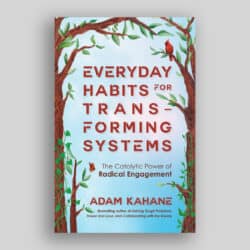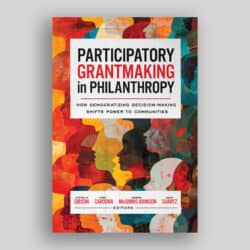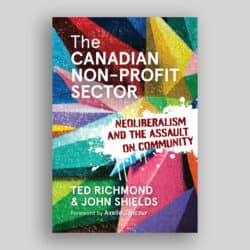In his new book, author Jacob Harold presents nine “tools” that can be used – in combinations or recombinations, depending on one’s strategy – to address complex social problems.
The Toolbox: Strategies for Crafting Social Impact, by Jacob Harold. John Wiley & Sons, 2022; 327 pages; ISBN 978-1-119-86333-5
Making social change is enormously difficult, no matter what position you occupy or social problem you want to address. Non-profit leaders, public policy makers, social enterprise founders, and even the executives of businesses with a blended bottom line can be challenged by the difficulties of making social change happen – be it predictably, sustainably, or even radically.
The Toolbox: Strategies for Crafting Social Impact is a book designed to help the social changemaker – the person working for a better world, in a non-profit or any other context. The author, Jacob Harold, is himself a changemaker. He has had multiple roles in his career: an activist, a philanthropist, a technology platform builder, an intermediary network executive, most recently at Candid, the U.S-based data centre for non-profits and foundations. In each of these roles, most of which have been in the non-profit sector, he has brought different tools to the job of social change. By tools, he means “frameworks for thinking and acting.” More specifically, these are ways of understanding and shaping context, data, individual behaviour, and institutional relationships. In an innovatively designed new book, Harold presents and describes his version of a “box,” or way of thinking about social change strategies, and nine “tools” for the box that can be used as approaches to the work of crafting action for social change.
Before Harold gets to his nine tools, each of which gets a chapter to itself, he devotes three introductory chapters to a discussion of strategy. In his view, before you go to your box to choose a tool, you need a strategy – an approach that helps you choose one or multiple tools to approach complex social problems. Many of us who have worked on strategic plans know that it is important to begin with understanding the environment (both external and internal). Harold gives his readers a high-altitude tour of a world in a state of extraordinary flux, dislocated by new technologies that are rapidly changing our environment. We know them – new media, artificial intelligence, biotechnology, nanotechnology, the internet of things, and others – but we can’t yet grasp the full consequences of their applications for human society. Harold wonders, as others do, if human nature and culture can cope with this amount of flux. “On some deep cognitive level,” he notes, “we humans are ill-suited for the social media age.” Nevertheless, in a “volatile, uncertain, complex and ambiguous (VUCA)” world, Harold is still an optimist. He believes that there is an opportunity for growth, innovation, and nonlinear change: “Openings emerge in times of flux.” This is a consequential time in the human story, he says, where our choices will matter for generations to come (a point also made by the philosopher Will MacAskill in his recent book What We Owe the Future).
Harold defines strategy as ‘the logic we use to allocate our resources to achieve a goal.’
Harold uses this picture of a world in flux, in a “plastic hour,” to argue that social change strategies must be both clear and flexible. He defines strategy as “the logic we use to allocate our resources to achieve a goal.” Logic, resources, and goal may alter depending on context. But as alteration happens, we need to continue to reimagine the pathway of thinking and action to social change – a clear, if flexible, strategy that combines these three elements. The nine tools that Harold presents and discusses are meant to be used in combinations or recombinations depending on the strategy. No one tool is the solution; each can be selected for different purposes at different times. The box holds the tools; the tools don’t shape the box.
What are these nine tools that Harold presents? They are all familiar to most planners if not to most changemakers. He groups them in a map or matrix that helps in selecting which might be most relevant in a particular situation. The first group of tools help in “gathering” – bringing people together with power. They are storytelling, community organizing, and institutions, or what Harold calls “patterns of relationships.” The second group of tools help in “understanding” – making sense of people and systems. They are behavioural economics, mathematical modelling, and complex systems. The third group of tools help in “navigating” – figuring out how to act amidst complexity. They are design thinking, game theory, and markets.
Harold describes each tool, provides examples of the tool in use, and lists takeaways and additional resources to consult.
Each tool will help a social change agent in different aspects of their work. Storytelling invites others to join the journey. Mathematical modelling clarifies, reveals insights, and helps us learn and plan. Behavioural economics helps the agent understand how people behave and how to shape choices. Design thinking forces the agent to listen and to iterate. Community organizing (and advocacy) magnifies people power and targets decision-making power. Game theory helps agents align their work with others’. Markets can be used to apply capital for social good. Complex systems teach agents to focus on the whole, not just the parts. Institutions are what social change agents work within and through and can be tilted toward a better world. In nine dense but rewarding chapters, Harold describes each tool, provides examples of the tool in use, and lists takeaways and additional resources to consult.
Harold is an unusual thinker and writer, someone who expresses himself more than most, one might say, as a blend of left brain and right brain. Brain researchers know that certain functions of the brain reside more on one side than the other. This has led to a popular misconception of people being “left-brained,” paying attention to details and ruled by logic, or “right-brained,” tending to be creative, big-picture thinkers. While it is unlikely that people have a dominant part of their brain in the same way that they have a dominant hand, they may tend as individuals to see themselves as more logical or more creative/intuitive. Harold expresses himself in both modes throughout this ambitious book, with a flow of language, images, and models to illustrate how he thinks about making social change. He creatively salts his text with stories, poems, quotes, diagrams, photos, and equations. Indeed, the book cover prominently tallies “36 diagrams, 22 stories, 17 poems, nine tools, five equations and one goal: a better world.” This makes for an intriguing guide, although more to be sampled than to be read in a linear way. As Harold puts it, the book is a “hybrid: part textbook and part pep rally.” It can be dipped into at any chapter, depending on the questions that a social changemaker might have, or the need for encouragement they might feel.
The book can be dipped into at any chapter, depending on the questions that a social changemaker might have, or the need for encouragement they might feel.
The tools are described as ethically neutral. That said, one of the most important messages of the book is that values and ethics must guide social change. Harold weaves throughout the book his commitment to what he calls ethical constancy. A social changemaker must work with ethical integrity. Tools and strategies can be used for good or ill. Ethics will decide what purpose they are devoted to. Harold is a political progressive. But not all social change agents are motivated by progressive views or beliefs. So Harold devotes a full chapter to ethics and social change, setting out some of the ethical questions that may confront social change agents when they try to do something that matters – recognizing that there are different beliefs, that there are both winners and losers, that money bestows power, that both present and future matter, that truth is not always easy to see, that actions must be done not to but with others, and that you and your organization are not one. Picking your way through social change is not easy. Your values are the thread that guides you through the thickets and the doubts.
In the end, Harold believes that every social change strategy must be truly shaped by kindness: “the kind thing to do is the strategic thing to do,” he writes. “Our world is messy and complex and dangerous but ultimately it is kindness that helps us build something better.” Kindness is his guiding thread, and a summation of this optimistic book’s belief in the why of social change.


